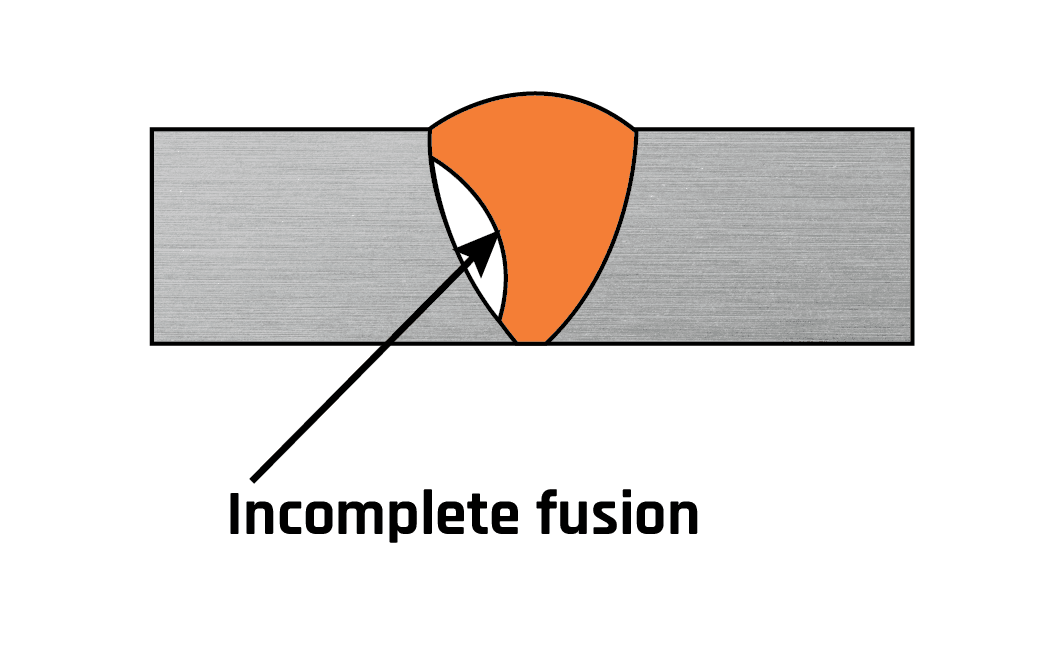Expert Strategies for Preventing Weld Undercut Successfully
Expert Strategies for Preventing Weld Undercut Successfully
Blog Article
Crucial Tips for Welders: Avoiding Undercut Welding and Ensuring Stronger Weld Joints
In the world of welding, achieving strong and long lasting weld joints is the cornerstone of generating high-quality job. One typical challenge that welders often encounter is undercut welding, which can compromise the integrity of the weld joint.

Comprehending Undercut Welding
Undercut welding is a common welding problem that takes place when the weld steel fails to appropriately fill up the groove and results in a groove-like anxiety along the weld bead. This problem weakens the weld joint, making it vulnerable to splitting and failure under tension. Damaging can be caused by various elements, consisting of too much welding existing, high welding speed, improper electrode angle, incorrect electrode size, and poor welding strategy.
One of the primary reasons for undercut welding is an imbalance in between the welding present and the welding speed. If the welding current is too expensive or the welding speed is too quick, the weld metal may not effectively fill up the groove, resulting in undercutting. Additionally, using an electrode that is too big can lead to a comparable result, as the excess steel can not appropriately move right into the groove.
To avoid undercut welding, welders need to guarantee they are utilizing the appropriate welding criteria, maintain an appropriate electrode angle, pick the proper electrode dimension, and technique appropriate welding techniques. By addressing these elements, welders can decrease the threat of damaging and develop stronger, much more reliable weld joints.
Appropriate Welding Technique
Reliable welding strategy plays a critical duty in guaranteeing the quality and integrity of weld joints. One fundamental element of proper welding strategy is maintaining the right angle and distance between the welding gun and the work surface.
In addition, a consistent and constant hand movement is important for developing strong and long lasting weld joints. Welders ought to go for smooth, consistent motions to ensure even distribution of the weld product. Proper control of the welding gun and filler material is likewise essential to accomplishing optimum infiltration and fusion.
In addition, regulating the warmth input and choosing the appropriate welding parameters based upon the product being welded are critical factors in accomplishing premium welds - Preventing weld undercut. Welders must comply with the recommended setups given by welding treatment specs and change them as required based upon the specific needs of the job. By grasping correct welding techniques, welders can significantly enhance the toughness and integrity of their weld joints
Choosing the Right Electrode
When taking into consideration the value of choosing the right electrode in welding applications,Keeping the correct angle and range between the welding weapon and the workpiece is fundamental. The selection of electrode plays a crucial function in establishing the top quality and strength of the weld joint. Electrodes come in various types, each developed for specific purposes and products.
To start with, picking the ideal electrode diameter is crucial. Thinner electrodes appropriate for welding thin products, while thicker electrodes are better for thicker products and greater heat applications. Matching the electrode size to the density of the work surface aids accomplish a well balanced weld.
Second of all, understanding the product composition of the electrode is vital. Different electrodes are made for welding details materials like steel, stainless-steel, light weight aluminum, or cast iron. Using the appropriate electrode product guarantees good combination and reduces the danger of issues in the weld.
Lastly, taking into consideration the welding setting and strategy is crucial when selecting the electrode type. Specific electrodes are better matched for above or upright welding placements, while others function well for flat or horizontal settings. Selecting the right electrode based on the welding method boosts the total weld quality and honesty.
Preparing the Base Steel
To ensure a successful welding procedure, what preliminary actions should be taken when preparing the base steel for welding? Additionally, any type of existing weld product or residue from previous welding need to be removed to make sure a clean surface area for the new weld.

Carrying Out Post-Weld Inspections
After conducting these read this article assessments, welders should contrast the results against market criteria and task demands to make sure that the weld joint meets all necessary standards. Any deviations or inadequacies uncovered throughout the post-weld assessment ought to be quickly dealt with via suitable restorative measures to ensure the weld's integrity. By vigilantly doing post-weld evaluations and quickly resolving any kind of concerns, welders can support the high quality and reliability of their work, ultimately adding to the safety and security and read the article longevity of the bonded frameworks.
Conclusion

Finally, avoiding undercut welding and making certain stronger weld joints call for a combination of appropriate welding technique, choosing the ideal electrode, preparing the base steel appropriately, and performing post-weld examinations. By understanding the reasons for undercut welding and applying the needed safety measures, welders can generate top quality weld joints that satisfy sector requirements and guarantee the architectural stability of the bonded elements.
Undercut welding is a typical welding problem that happens when the weld metal stops working to correctly load the groove and results in a groove-like depression along the weld grain (Preventing weld undercut). Damaging can be created by numerous aspects, including extreme welding current, high welding rate, improper electrode angle, inaccurate electrode size, and inadequate welding method
One of the major reasons for undercut welding is an imbalance between the welding existing and the welding speed. If the welding current is as well high or the welding rate is also quickly, the weld steel may not properly fill the groove, leading to damaging.Maintaining the correct angle and range in between the welding gun and the work surface is basic when considering the relevance of Get More Info picking the appropriate electrode in welding applications.
Report this page